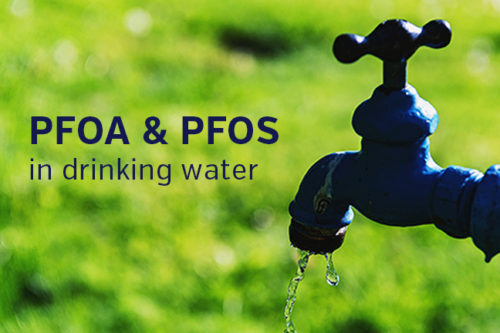OEHHA Releases Second Public Review Draft of Public Health Goals for PFOA and PFOS in Drinking Water
July 21, 2023
After two years, late last week the Office of Environmental Health Hazard Assessment (OEHHA) released its Second Public Review Draft of proposed public health goals (PHGs) for perfluorooctanoic acid (PFOA) and perfluorooctane sulfonic acid (PFOS) in drinking water. OEHHA has been working on the PHGs since 2019, and the release of the second draft is another significant regulatory development for water purveyors and municipalities providing other related services such as wastewater treatment because PHGs are used to create enforceable drinking water standards and remediation goals for groundwater contamination. The deadline to submit written comments on OEHHA’s Second Public Review Draft is August 14, 2023.
A PHG is the concentration of a contaminant in drinking water that is estimated to pose no significant health risk to individuals consuming the water on a daily basis over a lifetime. Although PHGs are not regulatory standards, development of a PHG is an important step in the process to establish a maximum contaminant level (MCL), a regulatory standard for drinking water that a public water system must comply with and can be used as a groundwater remediation goal for contamination. The State Water Resources Control Board (State Water Board) must set drinking water standards as close to the applicable PHG as is economically and technologically feasible.
As we previously reported, OEHHA issued its first public review draft in July 2021. OEHHA’s first draft underwent an initial round of public comments, as well as external peer review. Notably, however, OEHHA’s underlying technical support document for the second draft proposes the exact same PHG for PFOA and PFOS as its first draft. Specifically, OEHHA continues to propose a PHG for PFOA at 0.007 parts per trillion (ppt) (based on kidney cancer in humans) and PFOS at 1 ppt (based on liver and pancreatic tumors in laboratory animals). For comparison, the State Water Board’s current drinking water notification level for PFOA is 5.1 ppt and PFOS is 6.5 ppt. The draft document released by OEHHA presents the PHGs for PFOA and PFOS based on the most sensitive health effects, including consideration of sensitive populations (e.g., infants and children).
Earlier this year, the U.S. Environmental Protection Agency (USEPA) announced a proposed rulemaking that would establish legally enforceable federal primary MCLs for six per- and polyfluoroalkyl substance (PFAS) compounds in drinking water. In addition to MCLs for PFOA and PFOS, USEPA proposed to establish MCLs for perfluorononanoic acid (PFNA), hexafluoropropylene oxide dimer acid (HFPO-DA, commonly known as GenX Chemicals), perfluorohexane sulfonic acid (PFHxS), and perfluorobutane sulfonic acid (PFBS). Under the proposed rule, PFOA and PFOS would be treated as individual contaminants, both with primary federal MCLs set at 4.0 ppt.
Importantly, if a state does not have PFAS-related drinking water standards in-line with USEPA’s final rule, the state will, at a minimum, be required to establish new regulations to conform to USEPA’s standards. USEPA is expected to finalize its rulemaking before the end of this calendar year. Accordingly, and assuming USEPA adopts MCLs for PFOA and PFOS as proposed, the State Water Board will need to consider 4.0 ppt as the federal baseline in establishing any California-based MCL for PFOA and PFOS. Alternatively, the State Water Board could decide to forego adopting its own, more stringent MCLs for PFOA and PFOS altogether, and adopt the eventual federal standards. Perhaps more important, the State Water Board is in a rulemaking predicament because USEPA’s proposed rulemaking is intended to create not only MCLs for PFOA and PFOS but also PFNA, GenX Chemicals, PFHxS, and PFBS. Because OEHHA’s current development of PHGs is limited to PFOA and PFOS only, the State Water Board and OEHHA will need to decide whether to initiate an additional rulemaking to adopt their own more stringent standards for the other PFAS compounds.
Downey Brand LLP is closely monitoring the status of the draft PHGs through and beyond the current public comment period (August 14, 2023). For any questions about California or USEPA’s efforts to regulate PFAS, please contact us.

